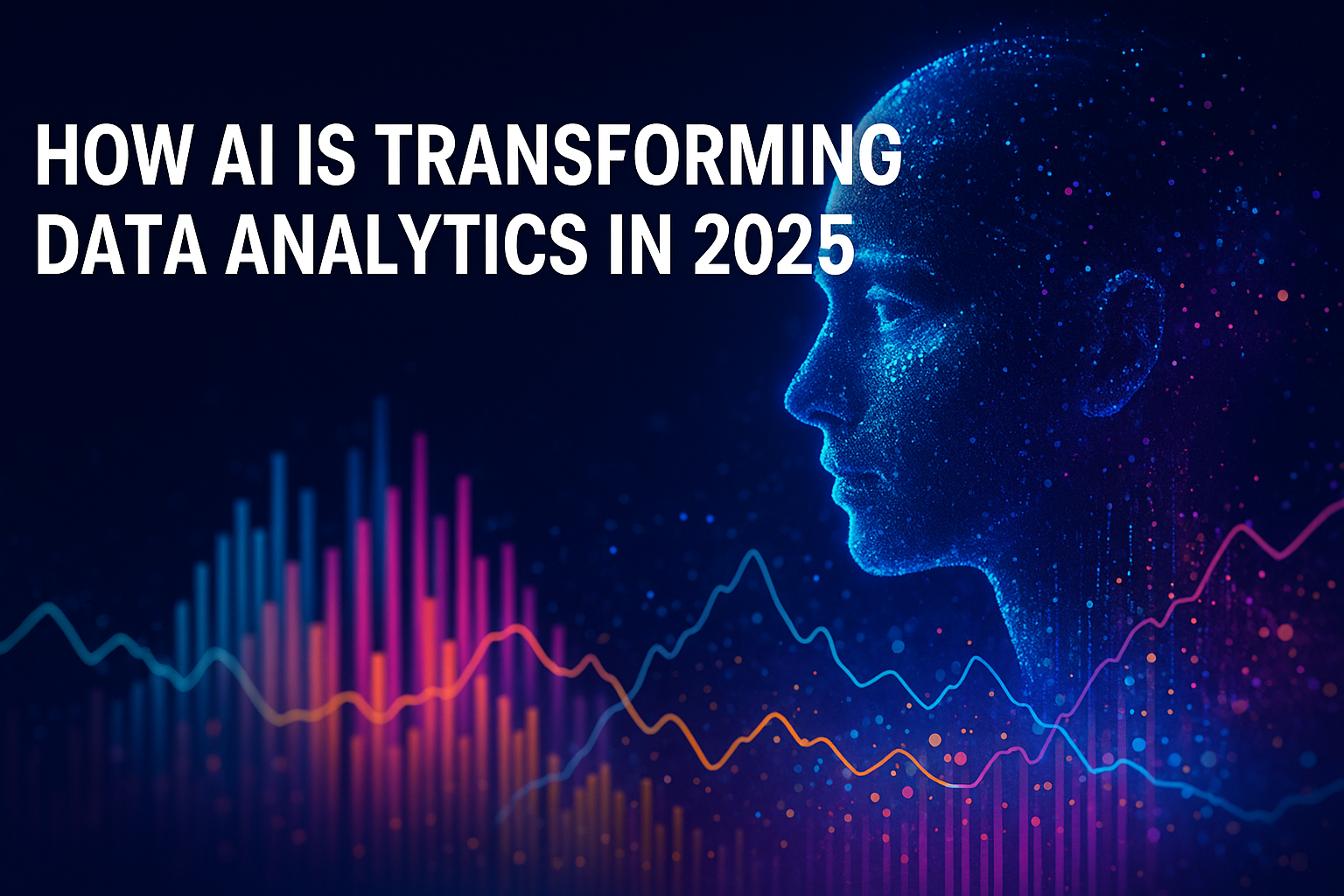In recent years, artificial intelligence (AI) has emerged as one of the most transformative forces in technology, and its impact on data analytics is profound and accelerating. As businesses accumulate massive volumes of data, traditional analytics methods are struggling to keep pace. Enter AI-powered analytics — a game changer enabling faster, deeper, and more actionable insights. In this comprehensive exploration, we delve into how AI is reshaping data analytics in 2025, unlocking new possibilities for organizations across industries.
The Evolution of Data Analytics: From Manual to AI-Driven
Before we explore the AI revolution, it’s essential to understand how data analytics has evolved. Historically, data analysis was a manual, labor-intensive process requiring skilled analysts to clean, process, and interpret data. The rise of business intelligence (BI) tools in the early 2000s automated reporting and dashboarding, but these tools still relied heavily on human input and static queries.
Today, AI-powered analytics automates much of this workflow. Machine learning algorithms detect patterns without explicit programming, natural language processing (NLP) allows business users to query data conversationally, and advanced predictive models forecast trends with higher accuracy. This shift is not merely about speed—it fundamentally changes how organizations interact with and extract value from data.
1. Automated Data Processing and Cleaning
A critical foundation for any analytics effort is clean, well-structured data. However, data preparation often consumes up to 80% of an analyst’s time. AI automates this tedious process with intelligent data wrangling tools.
AI-Powered Data Wrangling
Machine learning models can identify anomalies, detect duplicate records, and infer missing values by analyzing patterns across datasets. For example, if customer age data is missing in some records, AI might predict the likely age range based on related demographics or purchase history. This reduces errors that skew analysis and increases overall data quality.
Real-Time Data Integration
In 2025, businesses expect analytics platforms to integrate data from multiple sources—CRM systems, marketing platforms, IoT devices, social media, and more—in real-time. AI helps by dynamically mapping and normalizing data streams, ensuring timely and accurate reporting. This seamless integration enables decision-makers to act on current insights, not outdated reports.
2. Advanced Predictive Analytics
While descriptive analytics tell you what happened, predictive analytics forecast what will happen next. AI is supercharging predictive analytics through advanced modeling techniques.
Deep Learning and Neural Networks
Traditional predictive models like linear regression have limitations in modeling complex, nonlinear relationships. Deep learning models, inspired by the human brain, excel at uncovering hidden insights in vast, unstructured data. They are particularly useful in sectors like finance (fraud detection), healthcare (disease prediction), and retail (demand forecasting).
Use Cases in 2025
- Customer Churn Prediction: AI models analyze behavior signals across channels to identify customers likely to leave, enabling proactive retention strategies.
- Supply Chain Optimization: Predictive models anticipate disruptions by analyzing weather, geopolitical data, and supplier performance, helping companies avoid costly delays.
- Marketing Campaign Effectiveness: AI predicts which customer segments are most likely to respond, optimizing ad spend and creative strategies.
3. Natural Language Processing for Data Queries
One of the most user-friendly advancements in AI analytics is the ability to interact with data using natural language.
Conversational Data Access
Instead of navigating complex dashboards or writing SQL queries, business users can now ask questions in everyday language. For example:
- “What were our total sales in Q1 2025?”
- “Show me the top-performing marketing channels last month.”
- “Compare customer acquisition costs between regions.”
These queries return instant results in text, charts, or voice responses, making analytics accessible to non-technical users.
Voice-Enabled Analytics
Voice assistants integrated with AI analytics platforms allow users to speak their queries hands-free. This convenience supports faster decision-making and allows executives or field teams to get insights on the go.
4. Real-Time Analytics and Decision Support
In today’s fast-paced environment, delayed insights mean missed opportunities. AI-powered platforms provide real-time analytics, enabling immediate responses.
Streaming Data Processing
Modern AI analytics systems ingest streaming data—like website clicks, transaction records, sensor readings—and analyze it instantly. This real-time processing supports dynamic pricing, fraud detection, and personalized customer experiences.
AI-Driven Decision Automation
Some organizations leverage AI not just for insights but to automate decisions. For instance, an AI system may automatically adjust inventory levels or send personalized offers based on predictive models, reducing human lag.
5. Enhanced Data Visualization with AI
Even the best insights fail if not communicated clearly. AI enhances data visualization to ensure decision-makers quickly grasp key messages.
Smart Visualization Recommendations
AI algorithms recommend the most effective chart types based on data context and user preferences. For example, it might suggest a heatmap for regional sales or a waterfall chart for financial flows.
Interactive Dashboards
AI enables dashboards that adapt dynamically to user queries, highlighting anomalies or trends without manual setup. Users can drill down intuitively, supported by AI-generated narrative summaries.
6. AI-Powered Data Governance and Security
With increasing data volumes and regulatory scrutiny, governance and security are paramount.
Automated Policy Enforcement
AI monitors data access patterns to detect policy violations or unusual behavior, alerting security teams in real-time.
Regulatory Compliance
AI helps organizations comply with laws like GDPR by automatically classifying sensitive data and managing user consent records.
The Future of AI and Data Analytics: What to Expect
As AI technologies mature, their integration with data analytics will deepen, leading to:
Wider Adoption: AI-powered analytics will become a standard part of business operations across all industries.
Greater Augmentation: AI will assist analysts with “explainable AI” to interpret complex model outputs.
More Personalization: Analytics will tailor insights to individual user roles and preferences automatically.
Ethical AI: Transparent and fair AI models will be essential to maintain trust and compliance.
Why LaserBI Leads the AI Analytics Revolution
At LaserBI, we harness these AI advancements to deliver a platform where users instantly get voice-enabled, accurate insights from any dataset. Our technology breaks down barriers between analysts and business teams, empowering smarter, faster decisions.
Whether you’re a marketing leader, product manager, or executive, LaserBI equips you with the tools needed to thrive in the data-driven future.
Ready to experience the power of AI-driven data analytics?
Explore LaserBI today and transform how your organization uses data.


0 Comments